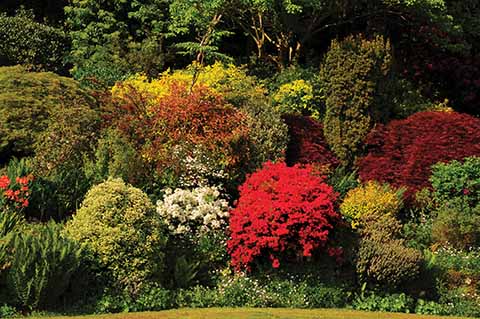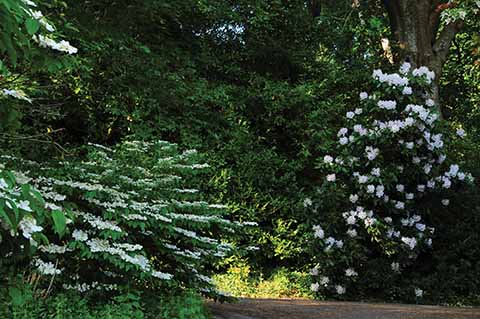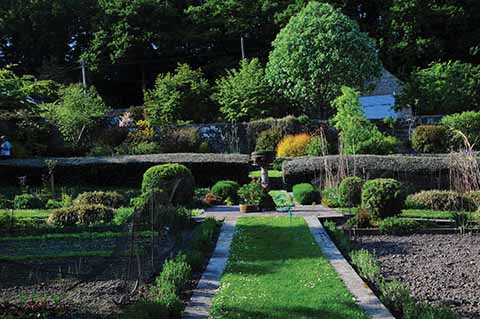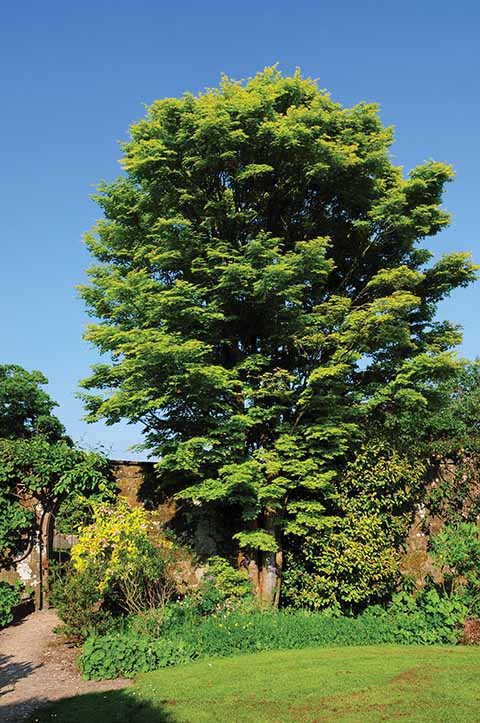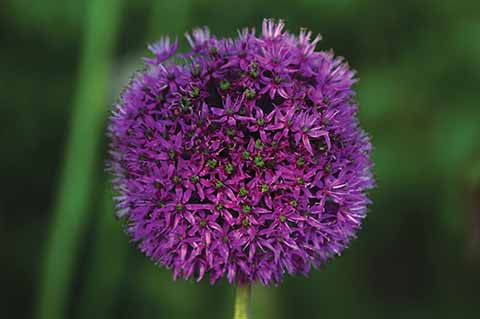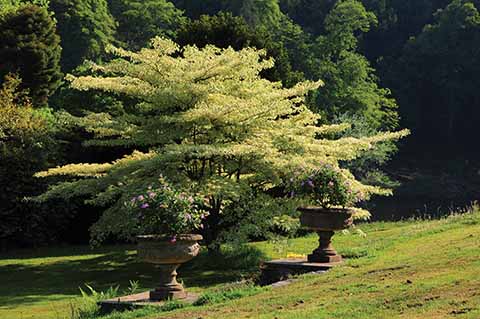A Dorset Garden – Wincombe Park
Susy and Colin Varndell visit a mature garden with panoramic views
Published in May ’19
Wincombe Park, now owned by John and Phoebe Fortescue, is in the far north of the county, just a short drive from Shaftesbury. The house itself was built between 1810 and 1820 but the land has a history going back much further. Wincombe Park has been in the Fortescue family since 1963, when the house and surrounding 325 acres of parkland, farmland, woodland, lakes and garden were bought from the well-known historian, Sir Arthur Bryant.
The present custodians of the house and gardens took over when John’s father died, around fourteen years ago. John’s mother, known as Toodie, was a knowledgeable plantswoman and always on the lookout for greensand-loving plants. She introduced some quite rare plants, while John’s father was a keen dendrologist, which explains some of the interesting tree specimens. They both obviously worked hard to develop such a glorious garden, laying out the grounds and replanting and sourcing new specimens where necessary. The lakes, which are fed from a tributary of the River Nadder (a beautiful chalk stream), were used by the Abbess of Shaftesbury, to provide fish for the residents of the Abbey.
The garden is approached via a long drive, lined with a variety of trees which creates an avenue effect, and reveals a spectacular vista across the valley. The house appears very comfortable, snuggled in its mature garden on the side of the hill, but it is only once you are in front of the house on the sweeping drive, and see the majestic view across the valley, that you realise what a special place this is.
From this vantage point other features of the garden become apparent: grass terraces, sloping lawns, a ha-ha which separates the garden from the parkland where the sheep graze, a stone creation, a formal border by the house filled with alliums, roses, lavender and perennial geraniums and a greenhouse with some interesting plants safely tucked away from marauding frosts. A Cornus controversa ‘Variegata’ has been planted as a focal point on a lower lawn where it is eye-catching, but where it can also soak up the sun, which it loves. The backdrop to the house and formal garden is an array of striking colours created from a mixture of camellias, azaleas, acers, rhododendrons and mature trees. Stunning!
Other trees to notice as you explore the gardens include Crinodendron hookerianum, a beautiful ornamental small tree, also known as the Chilean lantern tree. These were badly affected by the Beast from the East. Another unusual tree to look out for is Drimys winteri, an evergreen large shrub or tree with aromatic, leathery leaves. While exploring the garden, do watch out for uneven and steep steps, especially in wet weather.
The productive vegetable garden ensures the family is virtually self-sufficient in vegetables. The well-ordered plot is tended by Phoebe, the seedlings politely growing in their designated rows. Noisy guinea fowl entertain the visitor while they explore the vegetable garden. Eggshells, which have been dried and crunched up, protect plants from slugs. Homemade compost is produced in abundance; mixed with wood ash, it is then used in the garden to enrich the soil. It is here in the vegetable garden that you will find a stone bench in memory of Toodie, a fitting tribute to her work and a constant reminder of her influence in developing this garden.
The orchard is well stocked with plums, pears, apples, damsons, Bryanston gage, almond tree, mulberry tree, as well as figs along the wall. The resulting fruit is juiced or stored in the freezer ready to make jams or crumbles. The raspberry, blackcurrant and gooseberry bushes produce a large enough crop to ensure that the family is self-sufficient in soft fruit as well.
The overall site is quite sheltered, although the Beast from the East did manage to do a lot of damage last year. The garden is run on organic principles with no pesticides being used. This care for the environment is well repaid with fantastic sightings of barn owls, little owls, tawny owls and a fantastic array of other bird life. Wild flowers, which are particularly appreciated by Phoebe, are encouraged. Red campion, buttercups, bush vetch, common vetch, germander speedwell, herb Robert, dock, lady’s smock, primroses and much more add to the mix of formal with informal, and certainly invite pollinators to remain to feast.
Wincombe is aptly part of the ’Quiet Garden’ movement. This charity aims to nurture access to outdoor spaces for prayer and reflection, places where people can experience silence and restfulness. These Wincombe undoubtedly provides, being in such a glorious position. So visit this garden in May when it is at its best, when the shrubs are in bloom, and sit and enjoy the splendid setting with a good book. But make
sure you also leave lots of time to enjoy the woodland walk.
Wincombe Park is open under the National Gardens Scheme on 14 & 19 May, 2.00-5.00.
www.ngs.org.uk/find-a-garden/garden/8516/
